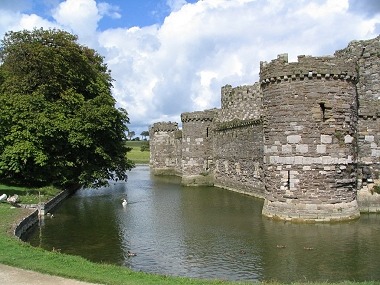I often discuss the concept of business and money with my 10 year old son Arjun. He has understood a basic concept of saving out of earnings. Out of the Rs 400/- pocket money which I give him, he saves Rs100/- and gives it back to me to “invest” in instruments which give a return higher than the risk free rate of return. He has therefore, asked me to put his money in businesses. I often ask him to exercise his mind and tell me businesses which he would like to run, if I were to give him some seed capital. The only caveat being that the business should be around for at least 20 years after he starts.He comes up with ideas of running a business of burgers(the McDonald’s influence), Soft drinks, selling computer games, a car workshop, a 7/11 store (retail chain of stores), etc. The idea is to expose him to understanding simple finance and open the parachute of his mind. After listening to him, I explained to him the concept of “economic moats”, popularized by the Oracle of Omaha–Warren Buffet.
What is a moat? Economic moat is a term popularized by Warren Buffett describing a company’s competitive advantage.

Competitive advantage (the moat) results from the unique mix of resources, capabilities, and core competencies that organizations develop or acquire to protect the business (the castle) from invading competitors. Warren Buffett is always on the lookout for companies that possess a sustainable competitive advantage. The concept also explains why he stays clear of industries where competitive advantage is difficult to create.
After having been investing in the markets for 20 odd years, I have understood this concept only now, and having understood the concept, I look out for companies which have a wide moat around them, because these businesses will keep running profitably irrespective of recession or growth.
Now, exercise your minds and look at your portfolios. Can you come up with a few such businesses?
Do big brands come to mind? Maggi, Cadbury’s, Mercedes, Gilette, ONGC, Crisil, Airtel, Coke, McDonalds these are businesses which are perpetually profitable. What makes them profitable? That is the key to a moat. Let me give you a simple primer.
- The business should not be easy to set up or replicate. Think about the scale of ONGC.
- The business should enslave the customer. Think of kids and Maggi. Kids and Coke.
- The business should have no competition or alternate or be a monopoly. Think of your morning shave and Gilette. CNG Pumps in NCR.
- The business should not be easy to switch. How about Tata Sky or Dish TV or your mobile operator?
- The business should have no alternate escape. How about the Gurgaon Toll Plaza or the DND Toll Plaza for Delhites.
- The business should have lots of customers who find it the best place to go to. Google. BSE. NSE. Cafe Coffee Day.
- Proprietary technology or patents which can get royalty. Windows and Viagra or Microsoft & Pfizer.
You will find that all the above mentioned businesses can pass increased costs to the customers and the customers cannot go elsewhere for their requirements. Thus, come heaven or hell, recession or boom, Tsunami or Sandy, they keep churning profits and wealth for their owners(shareholders).
So, Arjun understands the concept of “moats” and tries to decipher which businesses have moats. His first investment of Rs 100/- went into buying four shares of Noida Toll Bridge Co. A business with a moat.
Look at your portfolio again. Weed out all businesses which can be replicated and do not have a pricing power. And fill up your portfolio with businesses with Moats around them to protect you from the enemies. Hasta La Vista !

Dear sir,
1. I was revisitiing ur posts. I have been reading a bit about sustainble moats as they hve been told to be THE business to invest in. However, can u do a detailed post on the method to identify them? This has been hard, for although ONGC’s scale may be difficult to replicate, but it may still have negetive RoE as it is subjected to govt interference, has to sp govt subsidy bill and is sub to fluctuations in international prices of crude oil. So, as I understand it, how to
(A) detect if a business has a moat
(B) know if moat is sustainable – long term
(C) Measure the moat (in quantitative terms)
(D) Compare different moats – eg Nestle v/s CRISIL.
2. Thank you sir
Sorry Anshul did not get time to sit and work on your plan earlier.Should complete in this week.
In so far as moats are concerned, yes ONGC’s moat has been eroded by Cairn and Reliance licenses. The culprit is govt herself. They allowed blocks discovered by ONGC to be sold to private parties for whatever reasons. There are other businesses too with moats.
Compare Apples with Apples and oranges with oranges. Both Nestle and Crisil have different kind of moats. Nestle has brands and products. CRISIL has a regulatory authority to assess financial instruments as its moat. Profitability and other parameters however can be compared. Use a simple ratio of ROE to check out which is better and for length of time. An ROE of 25% for past 30 years may be better than ROE of 32% for three years.
Compare Nestle with HUL or P&G to get an idea of moats and profitabilities.
Businesses with moats rarely sell cheap, but when they do grab them.